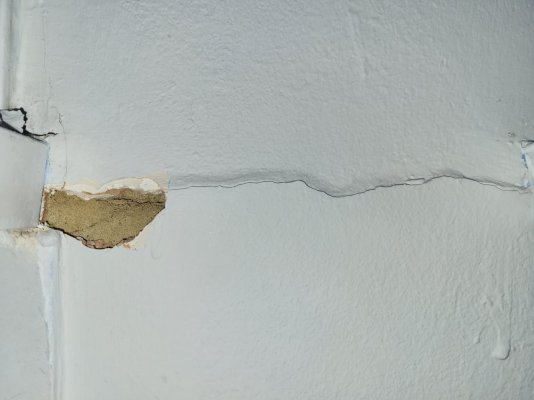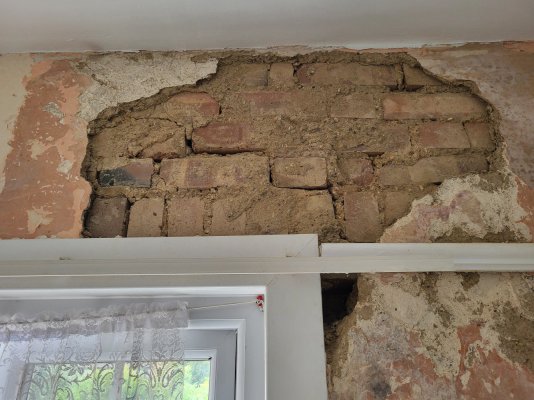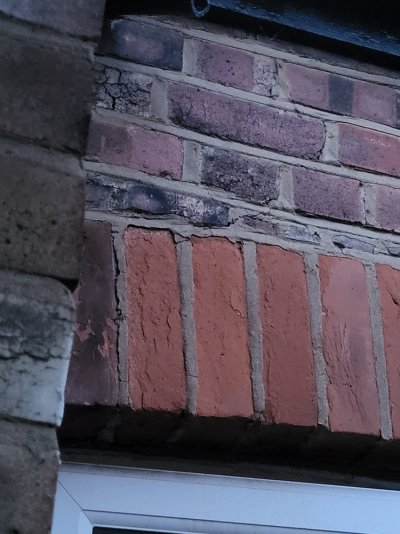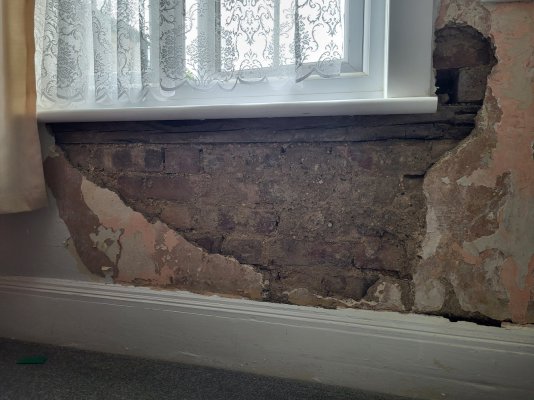Hello, hoping for reassurance on a previously repaired dropped brick arch, as we are now planning to add weight to the room above it and I wanted to check if the work done is sufficient to support it...
A few months after moving into our c.1909 end-of-terrace last spring, I noticed that the leftmost brick on the arch above a ground-floor window was broken, with some stepped cracking above. Our family friend/surveyor agreed with me that it had probably happened when the UPVC window was put in (many years ago presumably), but that it was unlikely to move further; he expected there would be a lintel on the inner layer of bricks, and the arch had only dropped on the outer layer. He therefore advised replacing the broken brick and repairing the cracks with an epoxy mortar (rather than helibars etc which I'd asked about). Our builder wasn't comfortable removing the brick in the end because the cracks seemed quite deep after raking out, but renewed the previous repair and cracks with epoxy mortar and then cement mortar on top to colour match pointing.
We figured we would see if it cracked again and take further action if needed - definitely if we ever come to replace the window, but hoping it would stay put until then. 8 months on, no further cracking, so all seems well so far. I have since noticed very slight cracking on the other side too, but I think this has always been there but never as noticeable as the left side, so overlooked.
We now need to redo the bathroom in the room above this with the two windows. We are planning to install extra tiling to the walls and floor, with a heavier freestanding-type bath, which will all add extra weight to the joists which go into this wall, as I understand it.
So my question is, is the repair sufficient to be able to add extra weight without worrying? Or is further work needed? Can we do the bathroom and then keep monitoring the cracks? Is it correct that there should be an internal lintel, and how can we tell?!
Thanks in advance for any help! Hoping I'm still worrying unnecessarily, but thought it might be helpful to double-check before paying out for the bathroom... Pictures show current state of wall, how it looked before repair, and inside view (UPVC is not actually aligned perfectly with wooden window surround - window is level, surround is slightly lower to the left viewed from inside).
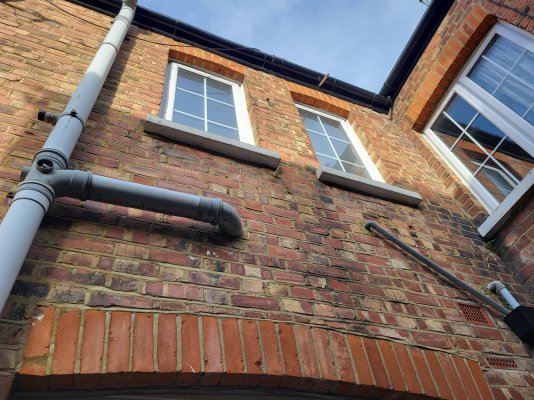
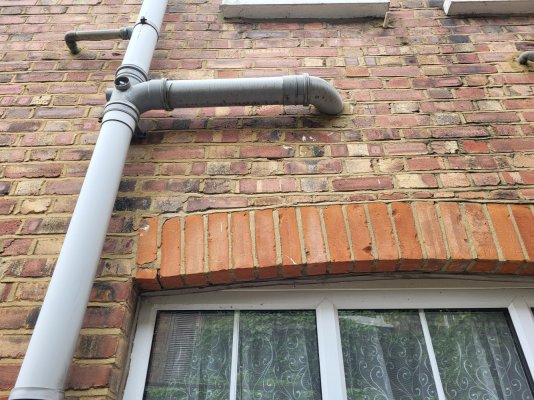
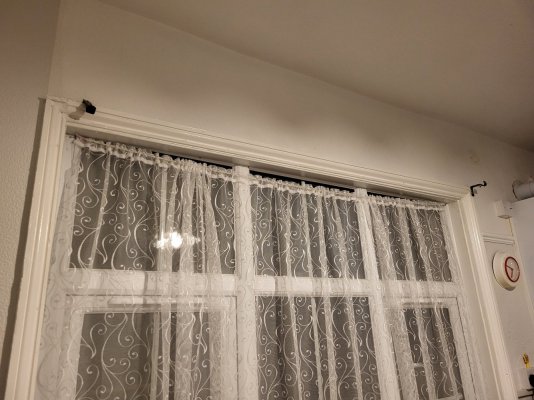
A few months after moving into our c.1909 end-of-terrace last spring, I noticed that the leftmost brick on the arch above a ground-floor window was broken, with some stepped cracking above. Our family friend/surveyor agreed with me that it had probably happened when the UPVC window was put in (many years ago presumably), but that it was unlikely to move further; he expected there would be a lintel on the inner layer of bricks, and the arch had only dropped on the outer layer. He therefore advised replacing the broken brick and repairing the cracks with an epoxy mortar (rather than helibars etc which I'd asked about). Our builder wasn't comfortable removing the brick in the end because the cracks seemed quite deep after raking out, but renewed the previous repair and cracks with epoxy mortar and then cement mortar on top to colour match pointing.
We figured we would see if it cracked again and take further action if needed - definitely if we ever come to replace the window, but hoping it would stay put until then. 8 months on, no further cracking, so all seems well so far. I have since noticed very slight cracking on the other side too, but I think this has always been there but never as noticeable as the left side, so overlooked.
We now need to redo the bathroom in the room above this with the two windows. We are planning to install extra tiling to the walls and floor, with a heavier freestanding-type bath, which will all add extra weight to the joists which go into this wall, as I understand it.
So my question is, is the repair sufficient to be able to add extra weight without worrying? Or is further work needed? Can we do the bathroom and then keep monitoring the cracks? Is it correct that there should be an internal lintel, and how can we tell?!
Thanks in advance for any help! Hoping I'm still worrying unnecessarily, but thought it might be helpful to double-check before paying out for the bathroom... Pictures show current state of wall, how it looked before repair, and inside view (UPVC is not actually aligned perfectly with wooden window surround - window is level, surround is slightly lower to the left viewed from inside).




